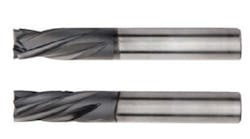"The manufacturing sector failed to grow in April as the PMI fell below 50 percent for the third consecutive month”, Norbert J. Ore, C.P.M., chair of the Institute for Supply Management Manufacturing Business Survey Committee said. “Manufacturers are in a situation where both new orders and production are slowly declining, but prices continue to rise at highly inflationary rates. Bright spots this month are the growth in the Backlog of Orders Index after six consecutive months of decline, continued strength in new export orders and a reduction in customers' inventories."
The seven industries reporting growth in April — listed in order — are: Computer & Electronic Products; Miscellaneous Manufacturing; Printing & Related Support Activities; Paper Products; Transportation Equipment; Machinery; Furniture & Related Products; and Chemical Products. The industries reporting contraction in April are: Wood Products; Textile Mills; Apparel, Leather & Allied Products; Electrical Equipment, Appliances & Components; Plastics & Rubber Products; Fabricated Metal Products; Petroleum & Coal Products; Food, Beverage & Tobacco Products; and Nonmetallic Mineral Products.
Commodities reported up in price include: aluminum, aluminum extrusions, copper, copper laden products, stainless steel, sheet steel and cold rolled steel. Steel was reported in short supply.
Manufacturing failed to grow for the third consecutive month in April as the PMI registered 48.6 percent, the same as in March. A reading above 50 percent indicates that the manufacturing economy is generally expanding; below 50 percent indicates that it is generally contracting.
A PMI in excess of 41.1 percent, over a period of time, generally indicates an expansion of the overall economy. Therefore, the PMI indicates the overall economy is growing and the manufacturing sector is contracting at this time. Ore stated, "The past relationship between the PMI and the overall economy indicates that the average PMI for January through April (49.1 percent) corresponds to a 2.5 percent increase in real gross domestic product (GDP). In addition, if the PMI for April (48.6 percent) is annualized, it corresponds to a 2.4 percent increase in real GDP annually."
The New Orders Index registered 46.5 percent in April, the same as in March. A New Orders Index above 51.6 percent, over time, is generally consistent with an increase in the Census Bureau's series on manufacturing orders (in constant 2000 dollars).
The Production Index increased to 49.1 percent in April, an increase of 0.4 percentage point from the 48.7 percent reported in March. An index above 49.9 percent, over time, is generally consistent with an increase in the Federal Reserve Board's Industrial Production figures.
The Employment Index registered 45.4 percent in April, which is a decrease of 3.8 percentage points when compared to the 49.2 percent reported in March. An Employment Index above 49.5 percent, over time, is generally consistent with an increase in the Bureau of Labor Statistics (BLS) data on manufacturing employment.
Delivery performance of suppliers to manufacturing organizations continued to slow in April as the Supplier Deliveries Index increased 0.4 percentage point to 54 percent from the 53.6 percent registered in March. A reading above 50 percent indicates slower deliveries.
Manufacturers' inventories contracted in April as the Inventories Index registered 48.1 percent, which is 3.2 percentage points higher than the 44.9 percent reported in March. This is the 24th consecutive month of inventory liquidation. An Inventories Index greater than 42.4 percent, over time, is generally consistent with expansion in the Bureau of Economic Analysis' (BEA) figures on overall manufacturing inventories (in chained 2000 dollars).
The Customers' Inventories Index registered 45 percent in April, a decrease of 6 percentage points when compared to March's reading of 51 percent. The index indicates that respondents believe their customers' inventories are too low at this time.
The Prices Index registered 84.5 percent in April, indicating manufacturers are paying higher prices on average when compared to March. This is the highest reading for the index since it registered 86 percent in May 2004. While 71 percent of respondents reported paying higher prices and 2 percent reported paying lower prices, 27 percent of supply executives reported paying the same prices as the preceding month. A Prices Index above 47.4 percent, over time, is generally consistent with an increase in the Bureau of Labor Statistics (BLS) Index of Manufacturers Prices.
Backlog of Orders Index registered 51.5 percent in April, 4 percentage points higher than the 47.5 percent reported in March. This is the first month of growth following six consecutive months of contraction in the Backlog of Orders Index. Of the 85 percent of respondents who reported their backlog of orders, 23 percent reported greater backlogs, 20 percent reported smaller backlogs, and 57 percent reported no change from March.
New Export Orders Index registered 57.5 percent in April, an increase of 1 percentage point when compared to March's index of 56.5 percent. This is the 65th consecutive month of growth in export orders.
Imports of materials by manufacturers contracted during April as the Imports Index registered 48 percent, 3 percentage points higher than the 45 percent reported in March.
Average commitment lead-time for Capital Expenditures decreased 6 days to 112 days. Average lead-time for Production Materials increased 3 day to 49 days. Average lead-time for Maintenance, Repair and Operating (MRO) Supplies increased 5 days to 26 days.
Latest from Uncategorized
Latest from Uncategorized
Uncategorized
Newsletter Confirmation Page
Oct. 29, 2012
Uncategorized
Gearmaking with Precision, and Speed
July 26, 2012
Uncategorized
Composites, With No Limits
July 25, 2012



